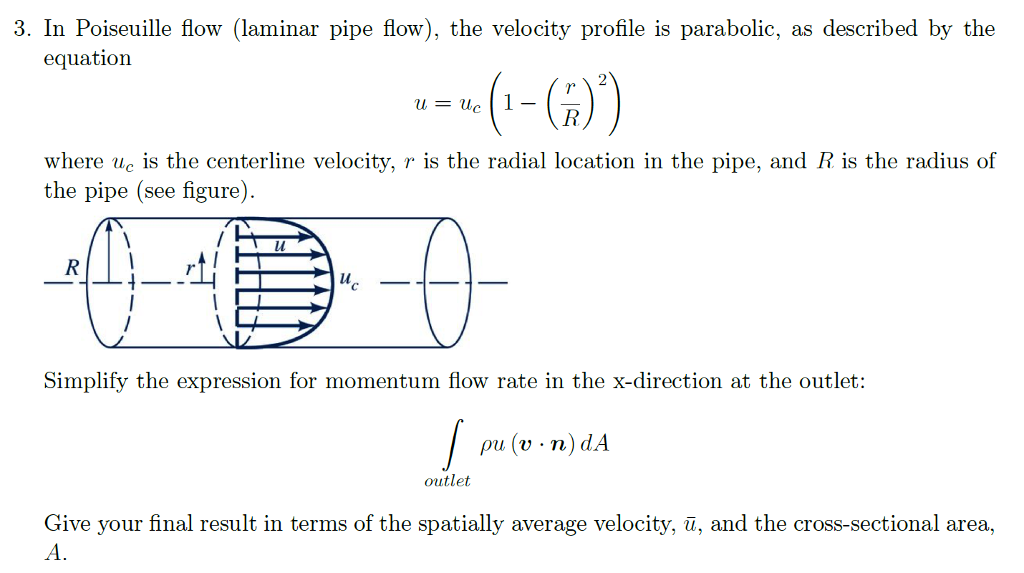

In all, you should have four curves on this plot (two each for second- and first-order discretization). Add a line corresponding to the least-squares fit to this plot. ∆r data (using symbols) to the above log-log plot. Repeat the calculation of coefficients p and K as above. In FLUENT, use "first-order upwind" scheme for momentum to solve for the flowfield on the three meshes. Let's see how p changes when using a first-order accurate discretization. You can strip the headers and footers in this file and read this into MATLAB as column data using the load function in MATLAB.Ĥ. Hint: In FLUENT, you can write out the data in any "XY" plot to a file by selecting the "Write to File" option in the Solution XY Plot menu.

Using MATLAB, perform a linear least squares fit of Where the coefficient K and power p depend upon the order of accuracy of the discretization. Where u_c is the centerline value from FLUENT and u_exact is the corresponding exact (analytical) value.

At the exit of the pipe where the flow is fully-developed, we can define the error in the centerline velocity as For each mesh, calculate the % error relative to the analytical value. Calculate the corresponding value from fully-developed pipe analysis. Calculate the shear stress Tau_xy at the wall in the fully-developed region for the three meshes. Axial velocity u should be on the abscissa and r on the ordinate.Ģ. Use a legend to identify the various curves. In all, you should have four curves in a single plot. Indicate the equation you used to generate this profile. Also, plot the corresponding velocity profile obtained from fully-developed pipe analysis. Plot the axial velocity profiles at the exit obtained from the three meshes. Use FLUENT with the "second-order upwind" scheme for momentum to solve for the flowfield on meshes of 100 × 5, 100 × 10 and 100 × 20 (axial divisions × radial divisions).ġ. The video below shows how to use ANSYS Fluent to set up and solve a problem like this.Ĭonsider developing flow in a pipe of length L = 8 m, diameter D = 0.2 m, ρ = 1 kg/m3, µ =2 × 10^−3 kg/m s, and entrance velocity u_in = 1 m/s (the conditions specified in the Problem Specification section).

John Cimbala and Matthew Erdman, The Pennsylvania State University Problem Specification (pdf file) Exercise 2: Laminar Flow within Two Rotating Concentric Cylinders Contributed by Prof. Visualizations of the flow within the slice and its linearization at equilibria enable us to trace out the unstable manifolds, determine close recurrences, identify connections between different travelling wave solutions and find, for the first time for pipe flows, relative periodic orbits that are embedded within the chaotic saddle, which capture turbulent dynamics at transitional Reynolds numbers.Author: Rajesh Bhaskaran, Cornell UniversityĮxercises (OLD) Exercises Exercise 1: Vertical Channel Flow Projections of these solutions and their unstable manifolds from their infinite-dimensional symmetry-reduced state space onto suitably chosen two- or three-dimensional subspaces reveal their interrelations and the role they play in organizing turbulence in wall-bounded shear flows. Within the symmetry-reduced state space, all travelling wave solutions reduce to equilibria, and all relative periodic orbits reduce to periodic orbits. Symmetry reduction by the method of slices is applied to pipe flow in order to obtain a quotient of the streamwise translation and azimuthal rotation symmetries of turbulent flow states.


 0 kommentar(er)
0 kommentar(er)
